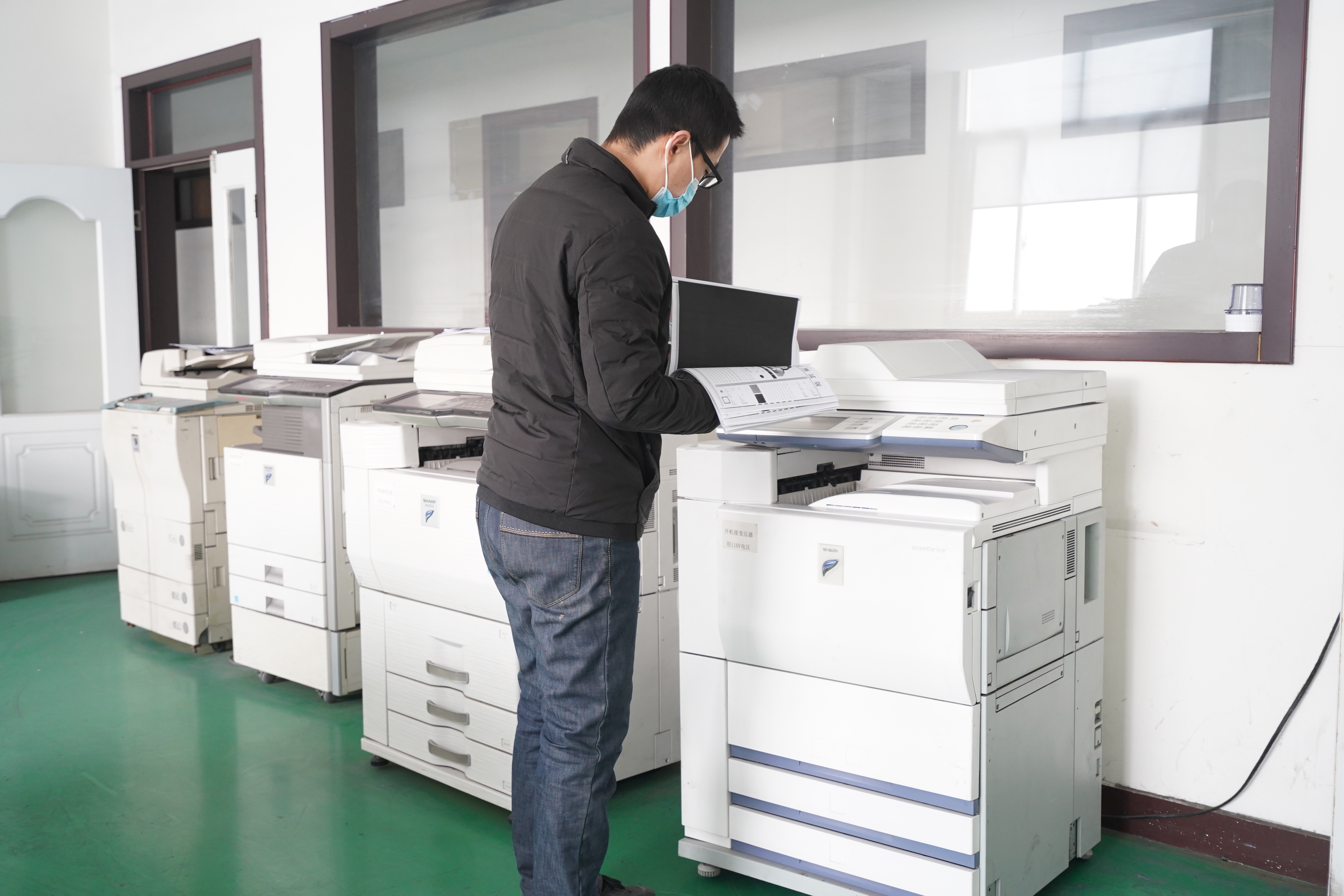The powder spraying failure of copiers has always been a common failure that plagues users and copier maintenance workers. I have summarized some experiences and experiences from maintenance work. I will discuss with you here. I will take the Ricoh 4418 copier as an example to make the following phenomena. a simple score
Fault 1: The copy image is light and has a slight background gray
This is a slight powder spraying phenomenon. This kind of failure is generally caused by the aging of the carrier. The problem can be solved by replacing the carrier.
1. Take out the developer, pour out the carrier, and inject a new carrier.
2. Enter maintenance mode 54 and 56 to adjust ID voltage to 4V and ADS voltage to 2.5V.
3. Enter the maintenance mode 65, perform the original setting of the new carrier, and observe the change of the powder adding voltage, which is generally around 1:8. Fault 2: The copier adding powder display light is always on

After the copier adding toner indicator lights up, add a new powder, but after adding toner to the copier, the toner indicator light stays on, which causes the copier to lock and cannot make copies. This kind of failure is generally caused by the use of inferior toner or substitute powder. We can generally solve the problem by following the steps below.
1. Open the back cover of the copier, turn on the switches SW-3 and SW-4 on the main board, and enter 99 on the panel to clear the toner indicator light.
2. Take out the toner, open the platen, and copy the black version until the copy has no bottom ash.
3. Enter maintenance mode 54 and 56 to adjust ID voltage to 4V and ADS voltage to 2.5V
4. Load a Ricoh original powder.
Fault 3: ID sensor parameter is zero in maintenance mode 55
When this kind of failure occurs, the copier stops supplying powder to the developer after spraying powder, so that the copy image becomes lighter. At this time, we should check the following parts.
1. Whether the ID sensor is contaminated by waste powder, resulting in inaccurate detection.
2. Check whether the high-voltage connection and its end seat are punctured by high-voltage, resulting in high-voltage leakage.
3. Whether the imaging high pressure plate or the transfer high pressure plate is damaged.
Post time: Aug-03-2022




